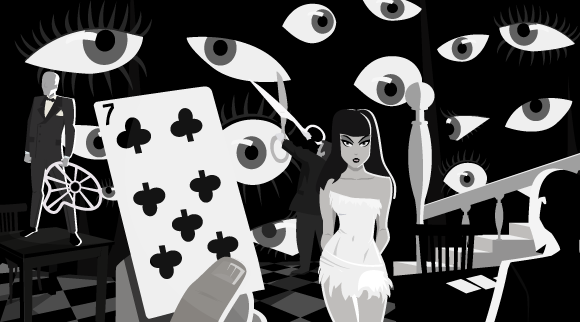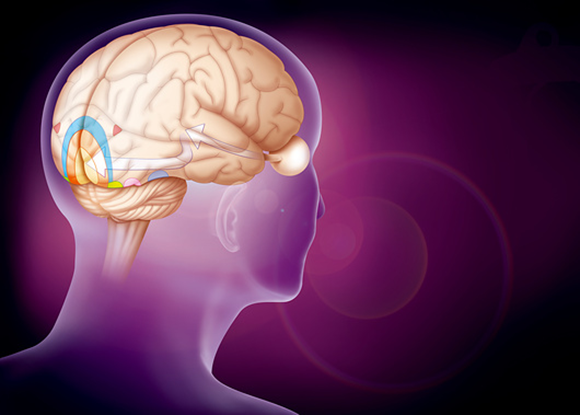In the late 19th century the father of psychoanalysis, Sigmund Freud, suggested a revolutionary concept that remains controversial to this day. Alongside our knowledge and our clear and expressed thinking patterns, he said, there exists a hidden layer that he called “unconscious” or “subconscious”, which comprises all the information, memories and experiences that exist within us and guide some of our actions without us being aware of this.
At the time there were no research tools that could confirm or disprove his hypothesis scientifically, and even with the tools currently available to us, confirming or refuting the existence of the unconscious is a difficult task.
However, with the progress of science, our ability to delve deeper into his claims and to examine whether there is a difference between what we are aware of, meaning that we are conscious about, and knowledge that we possess, but is not accessible to our consciousness, has grown.
Freud posited that individuals harbor in their brains events and memories that were formed during the early developmental years, which remain inaccessible to voluntarily recall. These submerged memories are stored in the depths of our unconscious, occasionally surfacing indirectly, manifesting in dreams, offhand remarks and slips of the tongue and other ways.
The therapeutic method he developed, psychoanalysis, centers largely on the attempt to take a peek into the unconscious and explore its secrets. Does our contemporary knowledge align with Freud’s notion of the unconscious?
3 View gallery


In Alfred Hitchcock's film "Spellbound," the protagonist describes his dreams to a psychiatrist, in an attempt to penetrate the unconscious
(Photo: Edgardo Ariel Rodriguez, Shutterstock)
To see without seeing
One phenomenon that demonstrates that there exists a gap between knowledge and awareness is blindsight. It was experimentally demonstrated that blind individuals are able to identify visual objects and distinguish between them without being able to actually see them.
For example, in a study, blind participants were seated in front of a screen, on which a dot of light briefly appeared at random locations for a few seconds at a time. At each stage the subjects were requested to direct their eyes to where they believed the dot appeared. Surprisingly, the subjects were able to direct their eyes in the right direction, though as far as they knew they saw nothing and were merely guessing.
How is it possible that people who cannot see were able to follow the dot of light? The answer lies in the cause of blindness. For the experience of vision to occur, two conditions must be met. The first is the proper eye function that enables the reception of information, and the second is the processing of this visual information in the visual brain cortex, which is located in the occipital lobe at the back of the brain.
Accordingly, there is blindness that is caused by damage to the eyes and blindness that is caused by damage to the visual cortex (cortical blindness). Blindsight does not occur in people with blindness of the first type, as their eyes cannot absorb the visual information to begin with. However, in cortical blindness there is input arriving to the brain from the eyes, without the person being aware of it.
For blindsight to occur, the visual information must be absorbed by the eyes and undergo some type of processing in the brain, though without the processes in the visual cortex that bring it to the consciousness. This unconscious data processing can even aid blind individuals in navigating their surroundings, as it turns out that people with cortical blindness can avoid tripping by being mindful of objects in their path.
This unconscious perception is likely related to the fact that visual information is processed not only in the visual cortex itself. Some of it is concomitantly paralleled to an brain area known as the amygdala, which is related to emotional processing.
Indeed, fiber system imaging studies (conducted with DTI MRI) identified a fast vision pathway, where visual information that may indicate danger - such as the proximity of a nearby predator - is directly transmitted to the amygdala, without first undergoing full visual processing in the visual cortex.
It appears that this is an instinctive mechanism in our brain designed to improve our reaction speed in dangerous situations and to provoke an immediate fear response that drives the individual to become alert and take action that may contribute to their chances of survival.
It is possible that beyond survival, this pathway allows the amygdala to process additional visual information of emotional significance, such as facial expressions, and to trigger a behavioral reaction without a conscious decision-making process.
The nature of blindsight varies among individuals with blindness, so that some are able to identify certain features of objects, such as faces or movements, while others may notice other characteristics of objects, such as colors and shapes. Yet, emotional vision through the amygdala pathway does not add up to a complete picture.
All share the absence of sight experience and are convinced that they are merely guessing. In other words, they possess knowledge regarding objects or faces and they act on it while not being aware of it. Thus, the phenomenon indeed expresses a significant gap between what people know and what they are conscious of.
3 View gallery


In blindsight, information bypasses full visual processing in the brain cortex and is transferred directly to the amygdala. The information pathway from the eyes to the visual cortex in the brain
(Jacopin / Bsip / Science Photo Library)
Knowledge, knowing And consciousness
Blindsight indeed illustrates the gap between knowledge and consciousness, yet it's likely not what Freud had in mind when discussing the unconscious. Freud’s concept of the unconscious primarily comprises old, emotionally charged memories that we are unable to directly access, yet they affect our emotions and behavior. These hidden processes act as subconscious motivators that drive our actions without our ability to pinpoint their origin.
The accumulation of knowledge is achieved through the storage of memories, which is categorized into two types. The first is explicit memory, which encompasses everything that can be verbally expressed. The second is implicit memory, which includes acquired skills, such as the ability to read and write or the ability to drive.
Explicit information is stored in the brain through the formation of new neural connections between nerve cells in the hippocampus, which is the area in the brain responsible for processing and storing new memories. In contrast, implicit memory relies on the brain areas that are associated with the specific learned skill. For example, improving one’s musical hearing ability will be manifested in the strengthening of connections between cells in the auditory cortex, which are responsible for processing auditory information.
The two types of memories coexist side by side. For instance, after a piano lesson explicit memory will allow us to recall the experience, including what was taught and felt, while implicit memory will enable our fingers to develop the skill without our conscious ability to articulate how.
3 View gallery


Following a piano lesson, we’ll remember what we practiced, our emotional responses, and the instructions from our teacher; this reflects explicit memory. Meanwhile, our fingers will gradually acquire the skill without our conscious awareness; this demonstrates implicit memory. Hands playing the piano
( Photo: Diego Cervo, Shutterstock)
The unconscious pianist
Memories are stored in our brains in the form of systems of connections (synapses) between nerve cells, available for retrieval when the need arises. However, connections between nerve cells can sometimes weaken, leading to forgetfulness.
Certain types of amnesia (i.e. memory impairment) offer insights into the distinction between consciousness and knowledge. The two primary forms of amnesia are anterograde amnesia - the inability to form new memories, and retrograde amnesia, which involves forgetfulness of past events. The severity and scope of the memory loss are influenced, in part, by the degree of damage to the hippocampus.
To his great misfortune, former British musician Clive Wearing developed both types of amnesia simultaneously. He could remember nothing from before his condition and was also unable to form new memories. In other words, effectively, he had no memories.
The damage to Wearing’s brain occurred after he contracted herpes simplex virus (HSV) and developed violent herpes encephalitis (brain inflammation), a relatively uncommon occurrence in cases of HSV infection. The condition caused severe damage to his hippocampus.
Despite the total erasure of his memory, he continued to play the piano with high proficiency, unaware that he had ever learned to play or that he had pursued it professionally. This ability, as mentioned, is based on implicit memory, which does not rely on the hippocampus. The damage to the hippocampus erased his explicit memory, including any awareness that he had acquired the skill of playing an instrument.
It was not only Wearing’s implicit memory that remained functional, despite the fact that he did not even remember his children’s names. Every time his wife Debra entered the room, a wide smile spread across his face without him knowing why. She remained the only person he could clearly recognize. He did not remember who she was, or that he married her, but something in his brain remembered the emotion that she stirred in him and reacted to her presence.
It might be possible to draw parallels between Wearing’s joy at the sight of his wife to behavior that stems from unconscious memories, as Freud claimed. Despite the difference in the type of information and the way it is processed in blindsight, compared to amnesia, it is possible that Wearing’s joy stemmed from the activity of the amygdala, which preserves emotional information and memories. However, this hypothesis lacks empirical validation as it has not been tested through brain scans or subjected to scientific examination.
One thing that is clear is that emotional processing in the amygdala affects the manner in which memories are encoded in the hippocampus and adds an emotional component to some of our memories.
Nevertheless, these are two distinct memory systems, so even after severe injury to the hippocampus, emotional memory may be preserved. You may have experienced something similar yourself - have you ever unexpectedly encountered someone and could not remember their name, identity, or the circumstance of your acquaintance, and yet felt certain that you knew each other?
Unconscious knowledge?
Do these phenomena confirm the distinction between knowledge and awareness? If so, is there a specialized mechanism for storing knowledge beneath our conscious awareness - the subconscious? This very much depends on perspective, as examining abstract concepts, such as the Freudian unconscious, using the physiological tools of brain science proves challenging.
Freud’s insights, though far-reaching, were primarily philosophical and poetic in nature and did not rely on scientific tools and empirical evidence. Nevertheless, his ideas have greatly influenced our understanding of the human psyche and behavior.
The field of research dedicated to subjecting Freud’s theories and those of his successors to scientific scrutiny is known as Neuropsychoanalysis. Researchers in this field use diverse research tools, including brain imaging devices, to correlate psychoanalytic theories of the mind with existing scientific knowledge.
Freud himself began his professional career as a brain researcher, but later turned to psychiatry as he felt, according to him, that the very limited knowledge that doctors possessed at the time did not allow to decipher the complexities of mental processes.
But today, neuropsychoanalysis has developed considerably, and Freud’s ideas are undergoing empirical testing, recognizing the inseparable connection between psychology and the brain - the biological infrastructure of the psyche.

